“Art is what you can get away with.” – Andy Warhol –
Who Is Andy Warhol?
Andy Warhol, a pioneer of Pop Art, left a lasting legacy on the art world through his striking, colorful, and boundary-pushing works. Born in 1928 in Pittsburgh, Pennsylvania, Warhol would go on to shape the future of modern art, making everyday objects the subject of high art. His art not only influenced the way artists viewed mass production but also redefined the relationship between commerce and creativity.
Warhol’s artistic journey was marked by a number of unconventional practices, artistic innovations, and an understanding of fame and consumerism. His work is still as influential today as it was in the 1960s, and the following fun facts about Andy Warhol’s art will give you a deeper understanding of his unique approach, style, and legacy.

Warhol Redefined the Ordinary as Extraordinary
One of the most fascinating aspects of Andy Warhol’s art is his ability to elevate everyday objects to the status of high art. A prime example of this is his Campbell’s Soup Can series. Warhol took an ordinary, mass-produced soup can and transformed it into an icon of American culture. His use of this commercial product was not just a commentary on consumerism but also a way of making art more accessible to the masses.
“I had it for lunch. I had the same lunch every day for 20 years—just the same thing, over and over again.”- Andy Warhol
Warhol’s repetitive use of the soup can in his art underscored his fascination with mass production and how the boundaries between art and commercial goods were increasingly blurring in the modern world. By transforming a simple object into fine art, Warhol challenged conventional ideas of beauty, value, and originality.

The Factory: Warhol’s Production Line for Art
Warhol’s studio, known as The Factory, was a legendary place where much of his art was produced. Located in New York City, The Factory was not just a space for painting and sculpting, but an artistic “factory” where multiple works of art were created at once. Warhol brought in assistants, many of whom were artists themselves, to help produce his works. This industrial-like system of art production was highly innovative and became a hallmark of Warhol’s approach to art.
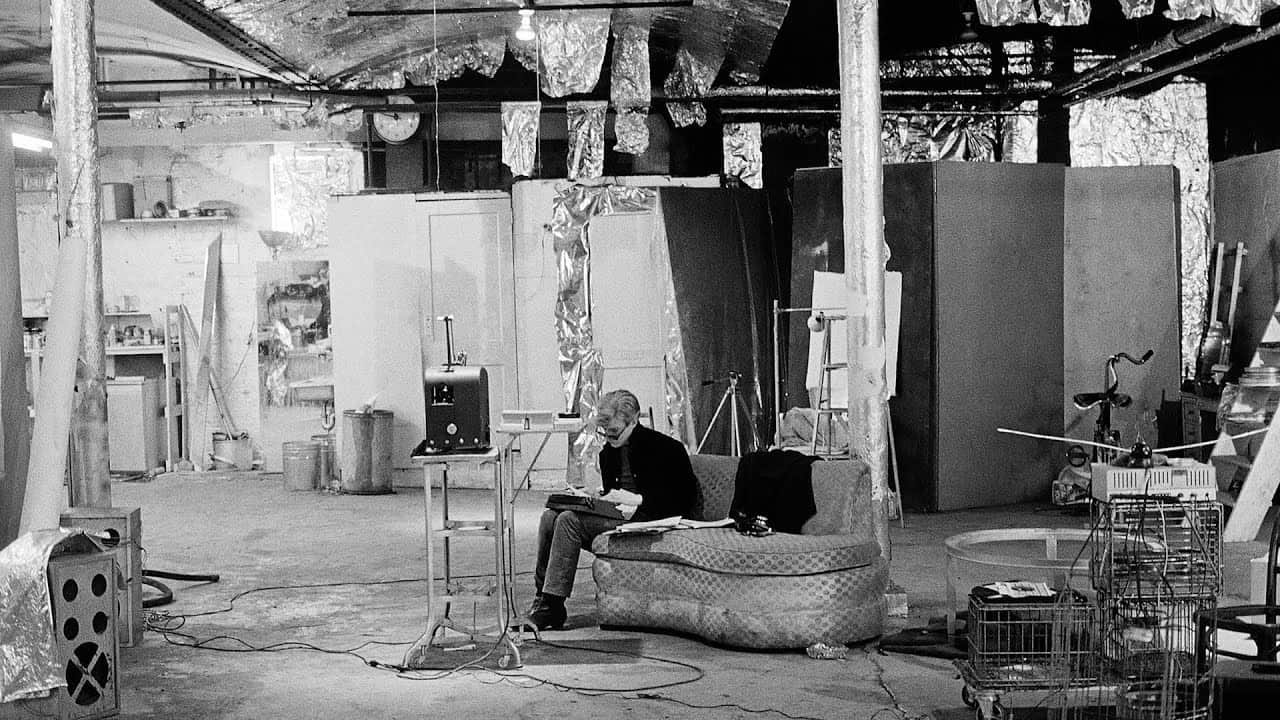
At The Factory, Warhol often used silkscreen printing to mass-produce images. Warhol’s assistants were sometimes tasked with printing his art using stencils, and these workers were even encouraged to develop their own artistic skills. Warhol was famously detached from the actual making of many of his pieces, viewing his role as that of a director overseeing the creation of art, rather than the artist doing the physical work.
Warhol Was Obsessed with Repetition
Repetition was a central theme in Warhol’s art. The use of multiple identical or near-identical images, such as his series of Marilyn Monroe portraits, or his repetitive depictions of Elvis Presley, is one of his defining stylistic elements. Warhol was fascinated by the concept of mass production, and by repeating the same image over and over, he reflected the way consumer goods and media are mass-produced and marketed to the public.
In his famous Marilyn Diptych (1962), Warhol printed a series of images of Marilyn Monroe in bright, vibrant colors, as well as more subdued black-and-white versions. The work combines both repetition and variation, mirroring the way Monroe’s image was endlessly recycled by the media. Warhol’s use of repetition made him a pioneer in the way contemporary artists understand mass media, celebrity, and consumerism.
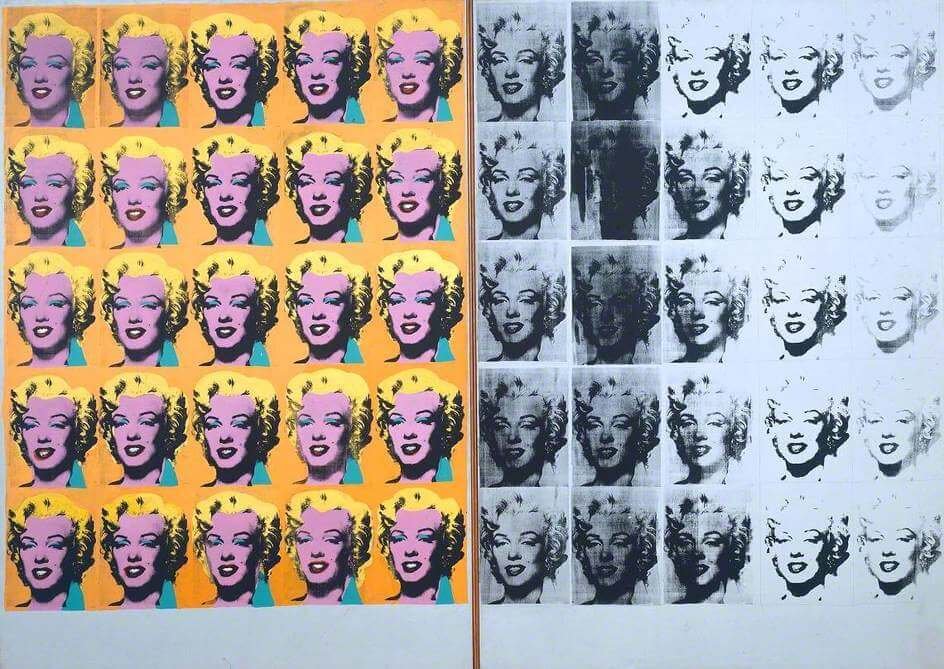
Warhol’s Art Was an Expression of Mass Media and Consumerism
Warhol was deeply influenced by the rise of mass media and consumer culture, particularly television, advertising, and magazines. His art often incorporated symbols and logos from popular culture, such as the Coca-Cola bottle, which he depicted in several works. Warhol was intrigued by the power of advertising and how products were marketed to consumers.
“I love commercial things. I’m a businessman. I like things that are big and popular.”-Andy Warhol
His Coca-Cola series, featuring the logo and bottle of the popular soft drink, is a prime example of how Warhol turned the products of consumer culture into high art. For Warhol, the commercial world was just as valid a subject for artistic exploration as traditional subjects like portraiture or landscapes. In this sense, Warhol was one of the first artists to fully embrace the idea that anything could be art.
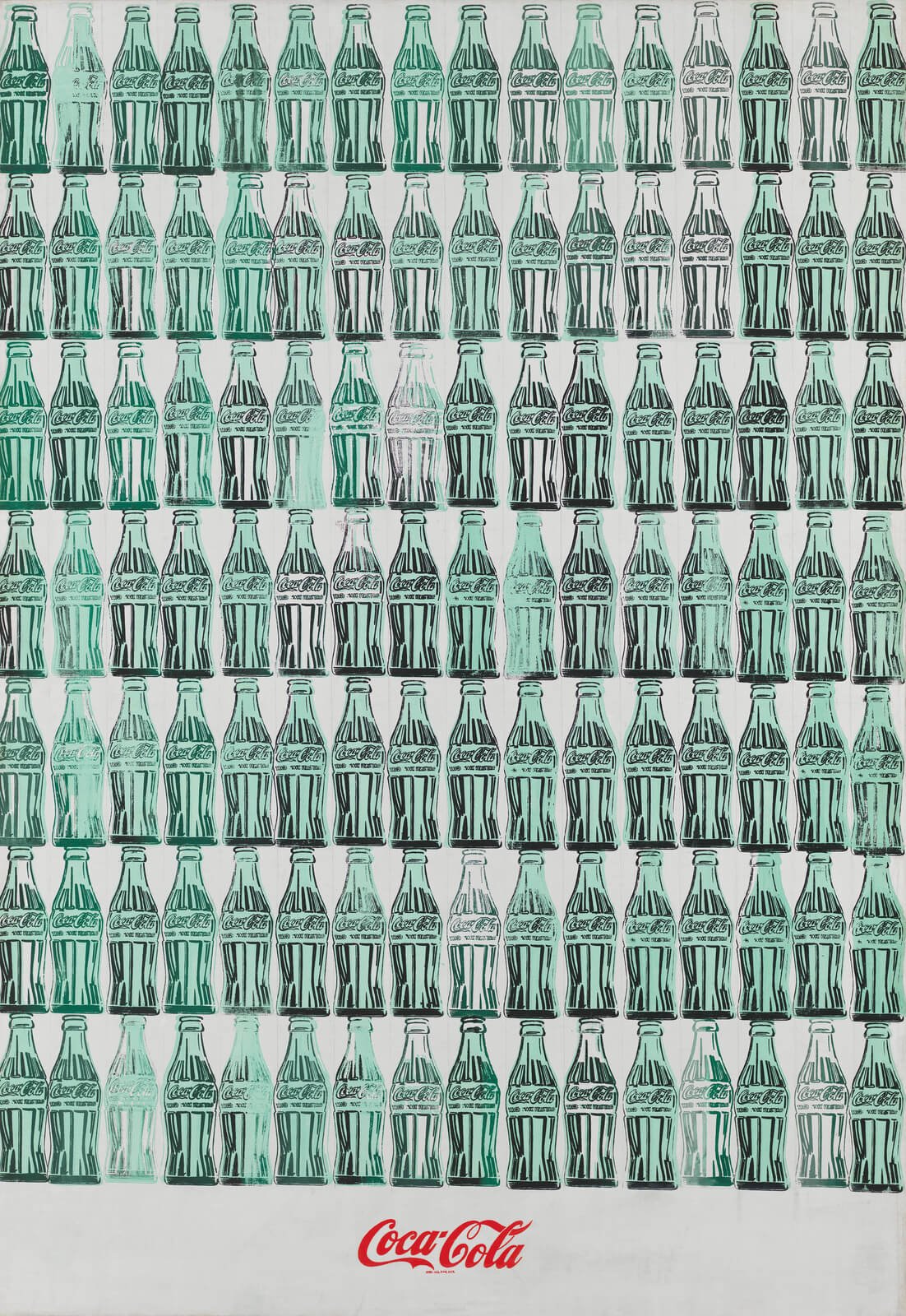
Warhol’s Impact on The Velvet Underground and the Music World
Beyond visual art, Warhol’s influence also extended into music. In 1967, Warhol became the manager and producer for The Velvet Underground, an avant-garde rock band that would go on to become one of the most influential acts in music history. Warhol designed their iconic album cover, which featured a simple, peelable banana image. The banana was both a playful nod to the rebelliousness of the band and an example of Warhol’s ability to turn anything into art.
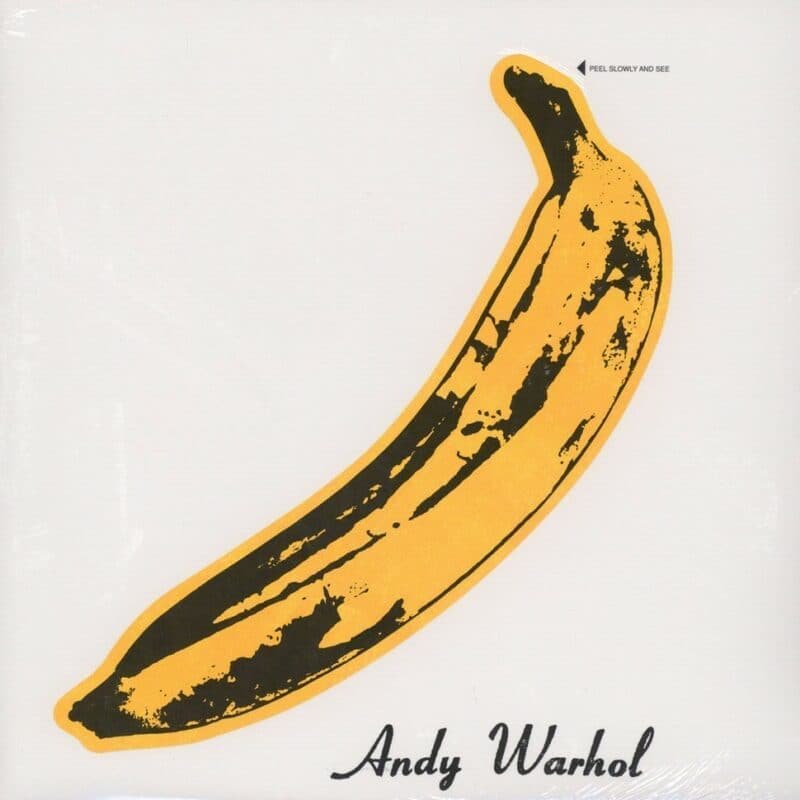
Warhol also encouraged the band to experiment with sound, art, and performance. He brought his concept of “total art” to their music, treating their live shows as pieces of performance art, where sound, visuals, and culture blended together. The collaboration between Warhol and The Velvet Underground became a defining moment in both the art and music worlds.
Andy Warhol’s celebrity obsession
Warhol was fascinated by the concept of fame and celebrity, and this obsession became one of the driving forces behind much of his work. This quote became a touchstone for modern celebrity culture, which is increasingly characterized by fleeting fame and viral moments.
“In the future, everyone will be world-famous for 15 minutes.” – Andy Warhol
Warhol’s portraits of celebrities like Marilyn Monroe, Elizabeth Taylor, and Elvis Presley were among his most famous works. He saw celebrities as modern-day gods and goddesses, whose images were circulated and consumed just like any other commodity. Warhol was fascinated by the way the media created and destroyed celebrities, and his portraits highlighted the superficiality of fame.
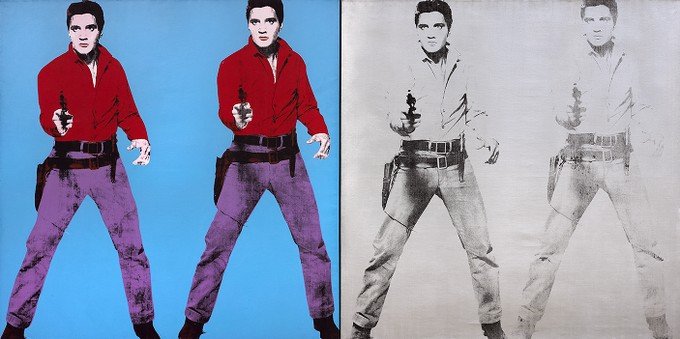
Warhol’s Art Was a Commentary on Death
Warhol’s Death and Disaster series stands as one of his most provocative and thought-provoking bodies of work. Featuring images of car crashes, electric chairs, and other tragedies, this series explored the morbid and dark side of human existence. Warhol’s depictions of violent death were, in part, a commentary on the sensationalism of the media and the public’s desensitization to violence. Warhol was keenly aware of how the media often glamorized and commodified tragedy, and his art reflected this harsh reality.
Warhol also explored the relationship between death and celebrity. His famous Electric Chair series (1964) showed the image of an electric chair, repeating it in different color schemes. The electric chair, a symbol of death and execution, is made less threatening through Warhol’s use of bright, bold colors, creating a strange sense of distance from the subject matter.

Warhol’s Use of Silk Screen Printing Was Revolutionary
Silk screen printing became Warhol’s signature technique, allowing him to mass-produce art in a way that mirrored industrial processes. His use of this method revolutionized the art world, challenging the notion that art had to be hand-crafted and unique. Warhol’s factory-like production of art also mirrored the rise of consumerism in postwar America, where mass-produced goods were becoming the norm.
Warhol’s method of silk-screening involved placing a stencil or screen on a surface, through which ink was pressed to create an image. This technique allowed him to produce multiple versions of an artwork quickly, which became a hallmark of his practice. Warhol’s use of repetition and mass production was a direct commentary on the role of the consumerist society in shaping culture.
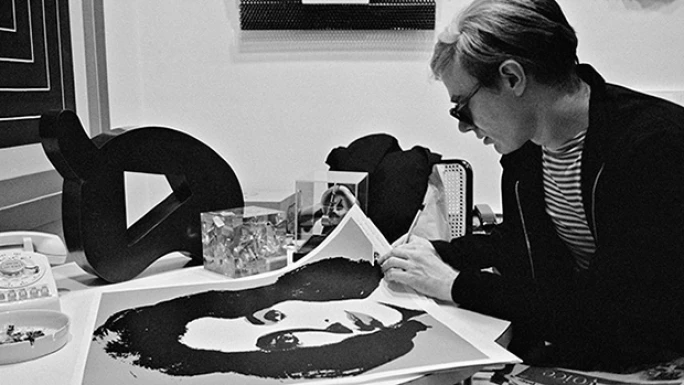
Warhol Created Art From Other People’s Art
In true Warhol fashion, he didn’t always create original works from scratch. He frequently reimagined or repurposed other artists’ works, adding his own twist. One notable example of this is his Diamond Dust Shoes (1980), where Warhol used a photograph of a pair of shoes by the photographer Richard Avedon and covered the image was embellished with diamond dust to create texture and sparkle.
Warhol also appropriated existing media imagery, such as advertising logos, comic strips, and newspaper clippings, to create new works of art. By borrowing and reinterpreting existing visual culture, Warhol emphasized the notion that art could be derived from everyday life and popular culture.

Warhol’s Iconic Silver Car Crash Paintings
One of Warhol’s most unsettling series, Silver Car Crash (Double Disaster) (1963) and explores the idea of death, disaster, and public spectacle. The series depicts grisly car crashes, framed in an almost sterile, silver-toned aesthetic. The repetition of the violent images emphasizes the disconnect that society feels toward such incidents, making them seem like an everyday occurrence.
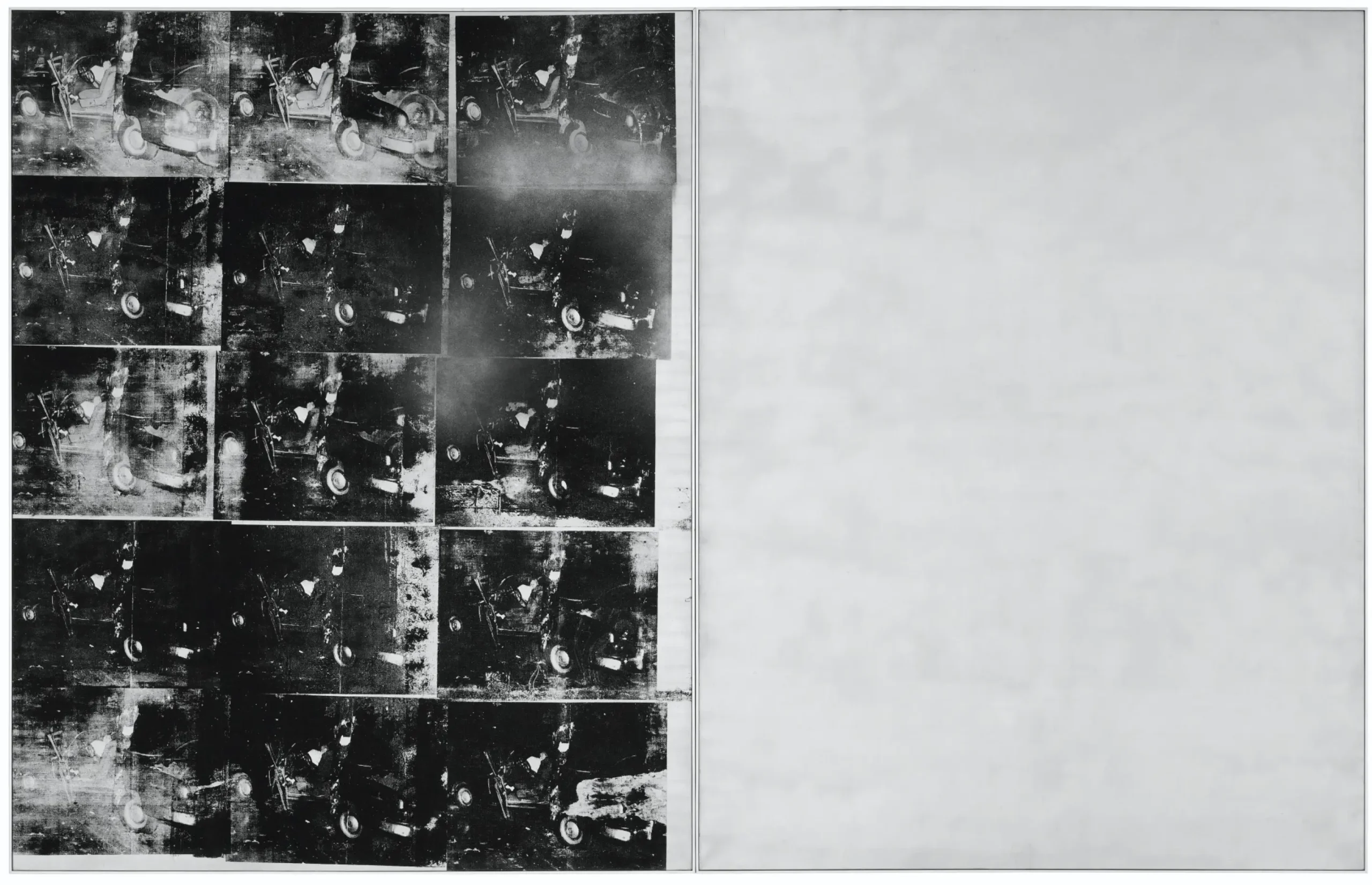
Warhol’s decision to use silver as the background color further enhanced the haunting quality of the work. The cool, metallic finish contrasts with the violent images, creating a sense of detachment from the tragedy being depicted. These paintings speak to Warhol’s interest in how tragedy and violence are consumed by the public, especially through media.

